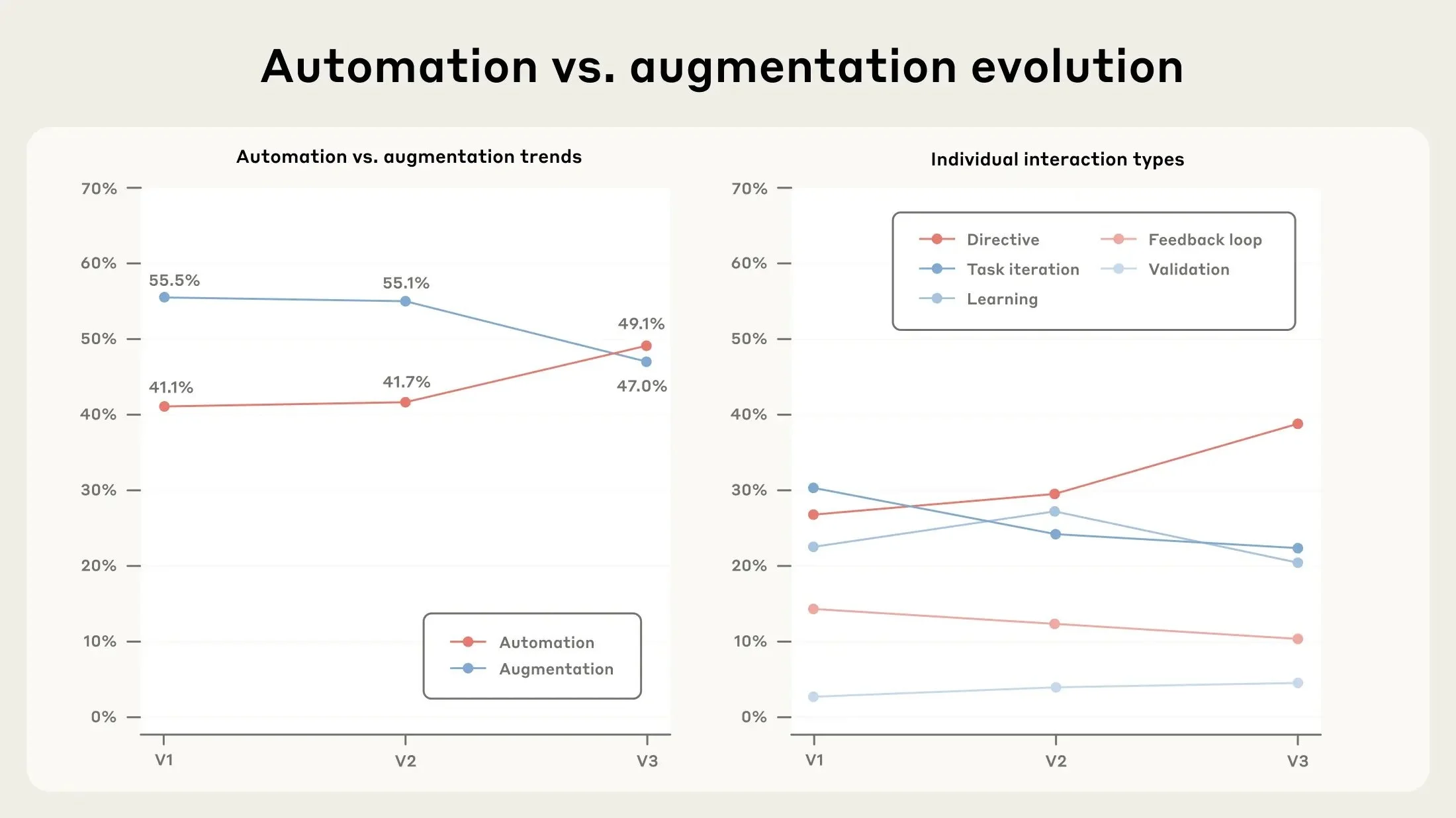AI’s Breakneck Adoption Forcing a New Marketing Playbook
What you will learn when reading the article:
Why AI adoption is breaking records: How the technology’s rapid uptake is reshaping planning cycles and forcing marketers to move faster than with past innovations.
How automation is transforming workflows: What the rise of fully delegated AI tasks means for campaign design, approvals, and accountability.
Why context is now king: Why the real competitive edge lies in organizing brand knowledge and data so AI can deliver high-quality, on-brand outputs at scale.
Anthropic’s September 2025 Economic Index lands a clear message for marketing and communications leaders: AI is moving from assistive tool to autonomous system much faster than any technology that came before it, and the firms winning early are reorganizing around that reality. “AI differs from prior technologies in its unprecedented adoption speed,” the report states, citing U.S. workplace use rising to 40 percent from 20 percent in 2023, a trajectory that outpaced the internet’s early growth curve.
That acceleration is not just about more people logging in. It is about how they work. On Claude.ai, directive interactions where a user fully delegates a task “jumped from 27% to 39%” in eight months, overtaking collaborative modes for the first time. Anthropic notes that users are achieving more of their goals “in a single exchange,” a signal of rising trust and improving first-pass quality. For communicators, that shift means rethinking roles, approvals, and risk: if AI can draft a release, segment audiences, or build a measurement brief in one step, brand standards, disclosures, and legal guardrails must be embedded in prompts, templates, and governance, not bolted on at the end.
Figure 1.2: Collaboration mode frequencies across Anthropic Economic Index Reports. The left panel calculates the share of conversations exhibiting either automation or augmentation forms of use. The right panel breaks this out by collaboration mode. Claude tends to be used in more automated ways over time, driven primarily by an increase in directive use. Source: Anthropic
Inside enterprises, the tilt toward automation is even starker. Anthropic’s analysis of first-party API traffic finds “77% of business uses involve automation usage patterns,” compared with about half for consumer interfaces. The API is where AI gets wired into production systems, which is why early business use clusters in coding and office or admin tasks that are easy to route programmatically. For marketing and communications teams, this is a blueprint: programmatic content assembly, reporting, listening, tagging, and knowledge retrieval are ready for scale today. The risk is sameness. The opportunity is freeing experts to do what AI cannot, like shaping narratives, handling sensitive stakeholders, and exercising judgment under uncertainty.
Critically, the report cautions leaders not to over-index on price. “Capabilities seem to matter more than cost in shaping business deployment,” with the most-used tasks tending to be the more expensive ones. In practice, teams pay for outcomes. If a higher-capability model reliably produces publish-ready copy, working dashboards, or accurate stakeholder maps, it wins despite token costs. Marketers and communicators should evaluate models against brand-safe output quality, factuality under pressure, and adherence to compliance, not headline CPM-style pricing.
The real bottleneck is context. Anthropic finds that “curating the right context for models will be important for high-impact deployments,” implying that firms will stall without data modernization and better organizational pathways to deliver briefs, brand voice, research, legal constraints, and historical performance to the model in structured ways. For communications teams, that means centralizing message houses, Q&As, stakeholder matrices, and asset libraries, and instrumenting them so your AI systems can cite, version, and learn. The payoff is compound: richer context increases first-pass accuracy, which makes more workflows safely automatable, which accelerates production without sacrificing nuance.
For an industry defined by speed, precision, and trust, the implication set is direct:
Adoption speed changes planning cycles. Quarterly pilots are too slow when usage and capability curves steepen weekly. Move to rolling sprints with metrics that reward outcome quality and brand safety, not only velocity.
Autonomy changes accountability. If you delegate more work to AI, shift QA from line-editing to pre-flight governance: approved prompts, retrieval scopes, model selection, and red-team checks before content reaches channels.
Automation changes org design. Treat API integrations as core commstech. Build small platform teams that serve PR, brand, social, investor relations, and internal communications with shared AI services and auditable logs.
Context beats cost. Invest first in knowledge architecture: brand voice packs, fact bases, policy binders, and measurement frameworks that models can actually use. The most capable setup is the cheapest when it eliminates rework and crisis cleanups.
As Anthropic puts it, the emerging pattern is systematic enterprise deployment where automation scales and context unlocks sophistication. For communicators, competitive advantage will come from pairing that infrastructure with human judgment, creativity, and trust building. The brands that modernize their data and governance now will not just move faster. They will sound more like themselves at scale.

